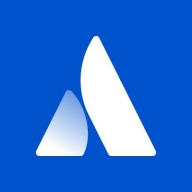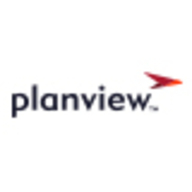

Atlassian ALM and Planview AgilePlace compete in the application lifecycle management category. Atlassian ALM has an advantage in integration and support, making it attractive to teams utilizing various tools. Conversely, Planview AgilePlace's strong feature set makes it a comprehensive choice for organizations.
Features: Atlassian ALM offers seamless integration with other Atlassian products like Confluence and Bitbucket, enhancing project tracking and bug management. Its flexibility to customize workflows is beneficial for teams with specific needs. In contrast, Planview AgilePlace provides dynamic visualization features and inherent support for Kanban methodologies, making it suitable for workflow optimization. Its Board Layout Editor and visualization tools are highly appreciated for their adaptability.
Room for Improvement: Atlassian ALM can improve its deployment process to reduce reliance on community support and enhance its standalone tool integration capabilities. It could also benefit from more advanced reporting features directly within the platform. Planview AgilePlace could enhance its customization options for reporting within the platform, streamline integrations, and reduce its learning curve to better suit diverse user needs.
Ease of Deployment and Customer Service: Planview AgilePlace offers both cloud and on-premise deployment options with a strong emphasis on guiding new customers through efficient setup processes. Atlassian ALM's deployment is straightforward but can rely heavily on community support, potentially prolonging the process. Planview AgilePlace excels with deployment flexibility and guided assistance, ensuring a smoother onboarding experience.
Pricing and ROI: Atlassian ALM presents a cost-effective entry, ideal for budget-conscious teams seeking high functionality. Although Planview AgilePlace has a higher initial cost, it compensates with significant ROI through workflow management and enhanced productivity. The comprehensive feature set of Planview AgilePlace justifies its pricing as a strategic investment for growth-focused organizations.
How to use Atlassian to manage application lifecycle: Atlassian builds software to pull together all the elements of application lifecycle management. Product management, developers, Q/A, dev ops, and business stake holders all have their own ways of interacting with application lifecycle management and Atlassian splits up the process into a few buckets.
1) Collaborate to plan and envision work
Atlassian's Confluence is a collaboration platform for building and driving consensus. Call stake holders in to give approval, comment on, and share pages and integrate with the rest of the development toolchain.
2) Build and track roadmaps
Atlassian's JIRA Software offers incredibly flexible project management with custom workflows, plugins, and high visibility rollups through JIRA Portfolio. Issues can be embedded right in confluence, or be used to kick off new branches in version control. Keep everyone on the same page with project progress.
3) Track and deploy code
Atlassian's Bitbucket is the world's most robust Git solution. The ability to deploy multiple-nodes with failover, global mirroring for super fast clones, and powerful code review control set it apart from competition. Bitbucket also has a mature plugin and hooks system that allows extensions and connection to a suite of CI software.
4) Support and Iterate
Track support requests, bugs, and route users in the right direction with JIRA Service Desk. With the same custom workflow engine as JIRA Software, a tight integration with the rest of the stack, and a knowledge base function make it a powerful addition to the ALM stack.
5) Tie it together
ChatOps helps tie every part of the ALM together. Get stake holders in the same room to manage a project, teams in the same page to manage their work, or plugin automated members to report on CI status, pull requests, page changes in Confluence, or bug reports. Like every piece of Atlassian's ALM there is a mature API for extending plugins and everything can be hosted behind your own firewall.
Planview AgilePlace is a cloud-based solution designed to provide businesses with a continuous flow of work to help teams accelerate delivery times by visualizing their work with enterprise Kanban boards and lean metrics. Planview offers project managers the visibility, resource management, and real-time analytics necessary to help their teams reduce bottlenecks and dependencies and work more effectively. By using Kanban boards, teams are able to visually track and manage the flow of their work from the strategy level, through implementation up to end-product delivery.
Planview AgilePlace Benefits
Planview helps teams to smoothly implement their strategies by offering its users the following benefits:
Reviews from Real Users
Planview AgilePlace stands out among its competitors for a number of reasons. Several major ones are its user-friendly management pane, the visibility that it provides for its users, and its agile management capabilities.
A manufacturing manager at a large manufacturing company writes, “Using the tool seems to save time versus trying to do things in a regular manner. It is highly collaborative; everybody can see things in one place. It is a highly functional, but pretty simple tool. That is hard to find: A tool that has a lot of functions, but is also simple.”
We monitor all Application Lifecycle Management (ALM) Suites reviews to prevent fraudulent reviews and keep review quality high. We do not post reviews by company employees or direct competitors. We validate each review for authenticity via cross-reference with LinkedIn, and personal follow-up with the reviewer when necessary.